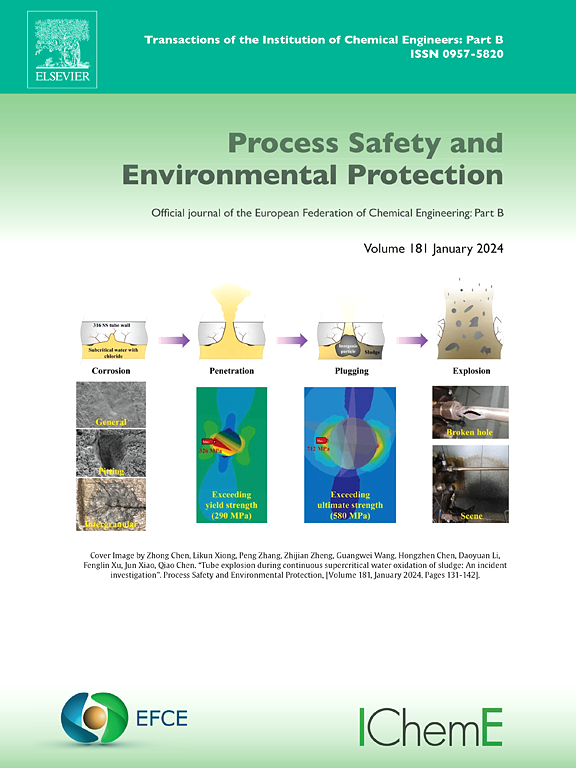Resource utilization strategy of Kanbara Reactor (KR) slag: Oxidation desulfurization, material cycle, low-carbon green pathway
IF 6.9
2区 环境科学与生态学
Q1 ENGINEERING, CHEMICAL
引用次数: 0
Abstract
The low-carbon greening of metallurgical solid waste treatment is an inevitable choice for the sustainable development of the iron and steel industry. China's desulfurization slag stock is substantial, yet there is a dearth of suitable treatment methods and secondary use technologies for desulfurization slag. The issue of desulfurization residue resource application demands prompt resolution. In this study, X-ray diffraction (XRD), X-ray fluorescence (XRF), and scanning electron microscopy with energy-dispersive spectroscopy (SEM-EDS) were employed to analyse the composition and structure of the physical phase in the slag. Additionally, thermal oxidative desulphurization was utilized to remove sulfur from the slag in the form of SO2 and to reuse the treated slag in the desulphurization process of molten iron. The results demonstrated that the sulfur present in the desulfurization slag existed in the form of CaS in the surface layer of the slag particles. The highest desulfurization rate of slag was achieved when Fe2O3 was employed as the oxidant, reaching 98.43 %. The desulfurization rate of molten iron in the initial recycling of treated slag was 93.22 %, with the [%S] of the molten iron being 0.0035 %. When the treatment slag is reused, it can be recycled twice under actual production conditions. In anticipation of a novel approach to the efficient and comprehensive utilization of KR slag. The treatment slag after oxidation desulfurization is directly reused for molten iron pretreatment, the residual heat in the slag be fully utilized. It not only increases the utilization value of KR slag resources, but also reduces the consumption of slag-making materials. The process pathway has the potential to transform bulk industrial solid waste into valuable resources, thereby facilitating an environmentally friendly and low-consumption recycling of KR slag.
求助全文
约1分钟内获得全文
求助全文
来源期刊

Process Safety and Environmental Protection
环境科学-工程:化工
CiteScore
11.40
自引率
15.40%
发文量
929
审稿时长
8.0 months
期刊介绍:
The Process Safety and Environmental Protection (PSEP) journal is a leading international publication that focuses on the publication of high-quality, original research papers in the field of engineering, specifically those related to the safety of industrial processes and environmental protection. The journal encourages submissions that present new developments in safety and environmental aspects, particularly those that show how research findings can be applied in process engineering design and practice.
PSEP is particularly interested in research that brings fresh perspectives to established engineering principles, identifies unsolved problems, or suggests directions for future research. The journal also values contributions that push the boundaries of traditional engineering and welcomes multidisciplinary papers.
PSEP's articles are abstracted and indexed by a range of databases and services, which helps to ensure that the journal's research is accessible and recognized in the academic and professional communities. These databases include ANTE, Chemical Abstracts, Chemical Hazards in Industry, Current Contents, Elsevier Engineering Information database, Pascal Francis, Web of Science, Scopus, Engineering Information Database EnCompass LIT (Elsevier), and INSPEC. This wide coverage facilitates the dissemination of the journal's content to a global audience interested in process safety and environmental engineering.
 求助内容:
求助内容: 应助结果提醒方式:
应助结果提醒方式:


